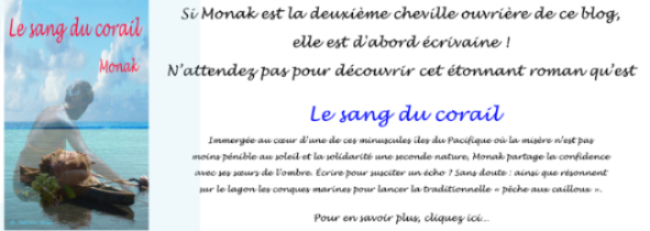
Wonderful humpback whales of
French Polynesia
Every year from June to November, humpback whales come
and stay always in Polynesian waters, became a sanctuary.
It’s nice at Tahiti this
morning. A lively and fresh East wind raises a short but violent swell on the
Pacific. However, it must not prevent us from boarding with Michel
Fayadat for a few hours of pure happiness to meet the
humpback whales…
 |
| A moment of intense emotion and unique between Tahiti and Moorea |
The meeting with cetaceans
is a unique moment of intense emotion really indescribable.
Today, we have the pleasure
of watching the frolics of a mother and its little, and of a male looking for a
mate (very rare). A little later, we cross the track of another whale with its
offspring…
Humpback
whales in French Polynesia
Every year since immemorial time, humpback
whales take refuge in Polynesian waters to give birth their newborn, away from
the cold night of Antarctic waters.
Thus, from June to November,
it’s possible to contemplate these amazing mammals close to coral reefs. If the
Marquesas is the only one archipelago to be neglected by the whales, it’s
doable on the other four. However, curiously, the most frequented zone by
cetaceans surrounds the sister islands of Tahiti and Moorea: i.e. one that is
the most populated and where boats of all kinds are circulating.
The humpback whale is an
animal that doesn’t easily change its habits. Every year, it used to return in
those waters where it was born to give birth to its own pups and to allow them
to grow and firm up before returning to feed close to Antarctica. And it will itself
come back tirelessly to the same place every year throughout its long life of
whale.
 |
| A whale and its calf between Tahiti and Moorea |
The number of whales, having
elected the French Polynesia as resort is currently estimated to a thousand.
The reasons
for the migration of humpback whales
The humpback whales live
mainly in the frigid waters of the Austral Ocean because they find their food here:
the krill.
Krill (Euphasia superba) is
a small coldwater shrimp which is the staple diet of our whales. For the
record, we should know that to grow a kilo, our cetacean must swallow hundred
pounds of its favorite shrimp!
When the Antarctic area enters
its long dark period, krill density decreases considerably and is no more
enough to satisfy its appetite.
 |
| The tiny krill, the staple food of humpback whales |
Therefore, it joins the
warmer waters of the South Pacific where its energy expenditure is much less
important.
It enjoys travel to give
birth to pups it wears for a long gestation of eleven and a half months, and when
it’s time for it to do, to conceive another…
During the four or five
months when it’s staying in the warm waters, the humpback whales are feeding
virtually.
Protect
whales: a huge challenge
It was only since 13 May
2002 the Polynesian Assembly voted this resolution, making Polynesian waters a
sanctuary for humpback whales and other marine mammals.
This essential point of the “Environnement Code in
French Polynesia” (art. 121-3 A) although salutary, turns out, unfortunately,
very difficult to enforce.
French Polynesia, a territory comprising one hundred
eighteen islands, is the largest exclusive economic maritime zone in the region.
It’s monitored by the sovereign powers of the French State, but without neither
real political will nor means necessary to carry out.
 |
| Will Polynesia remain a sanctuary for whales?... |
This is known to all: number of protected sea animals,
whales or sharks, continues to fill the holds of ships (Chinese and Japanese
mostly). In breach of the law, they used to come into Polynesian waters,
fishing protected species. Local authorities don’t have the absolute means of
enforcing the law.
Besides the pollution
problems also concern Polynesia and elsewhere, and perhaps even more given the
fragility of islands ecosystem, the other major threat about the humpback
whales is the interest they generate, both among local people and tourists.
Sometimes these may have to pay a very high price for the right to get close to
the whales.
The outreach activities
about the whales and other marine mammals, are also highly regulated (Art.
121-35 to 121-43 A of the Code of the Environment). Unfortunately, many people
don’t respect these rules, without common sense, starting with a number of
those renting their services and boats to take tourists and curious to gaze
whales.
 |
| How long can we look at this? |
Is it just a lack of
resources that the police is never present to enforce the rules, often simple
common sense? Does this lack of means hide a cruel lack of political will and
courage?
The question is well and
truly laid, and the future of humpback whales depends.
My warmest thanks
to Michel Fayadat (Easy boat ) for his
kindness, his competence and respectful love for humpback whales. http://fr-fr.facebook.com/pages/Papeete-French-Polynesia/Easy-Boat-Tahiti/190594665826?ref=ts
An article
of Julien Gué
Translated from French by Monak
Copyright
Julien Gué. Ask for the author’s agreement before any reproduction of the
text or the images on Internet or traditional press.


Aucun commentaire :
Enregistrer un commentaire
Cet article vous a fait réagir ? Partagez vos réactions ici :